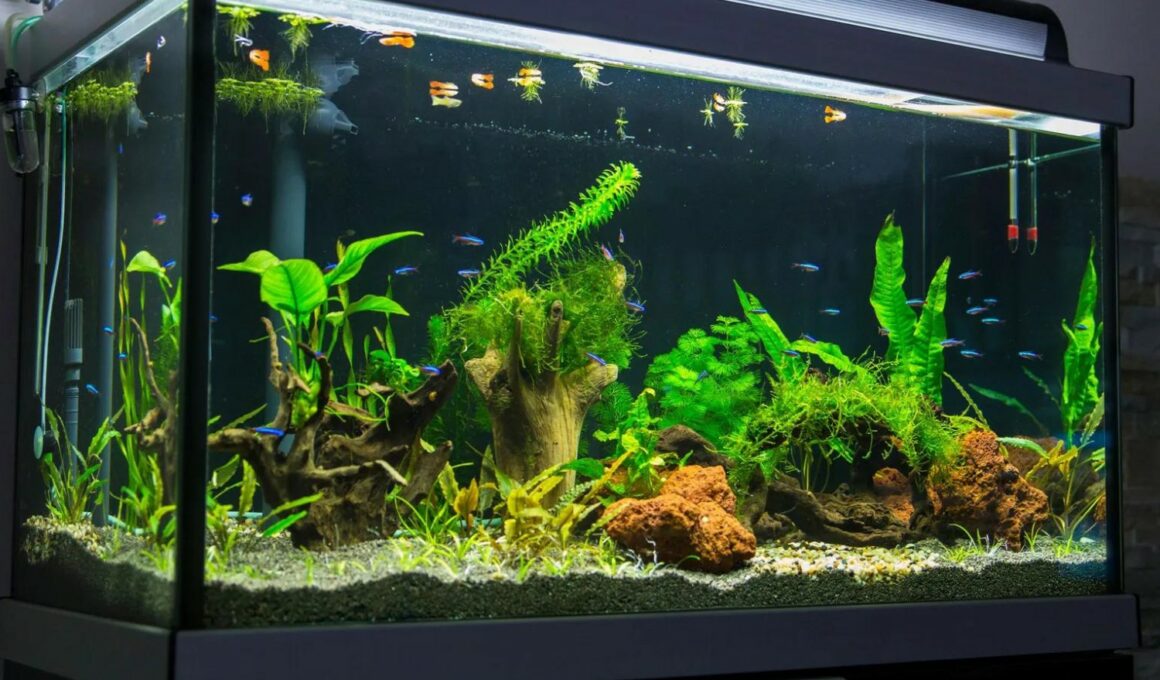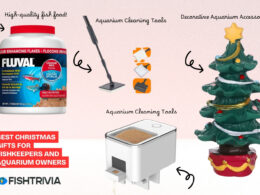In this article Show
As someone with extensive experience in maintaining home aquariums, I understand the importance of a clean and functional overhead filter. It’s not just about keeping the water clear; it’s about ensuring a healthy environment for your aquatic friends.
In this guide, we’ll explore the straightforward yet crucial steps to clean your overhead filter effectively. This process is vital for your fish’s well-being and the aquarium’s overall aesthetic. Whether you’re new to fishkeeping or a seasoned pro, our step-by-step guide is designed to provide you with practical, easy-to-follow instructions.
We’re here to make overhead filter cleaning less daunting and more manageable. By the end of this guide, you’ll be equipped with the knowledge and confidence to maintain your aquarium’s overhead filter, ensuring a thriving underwater world for your fish.
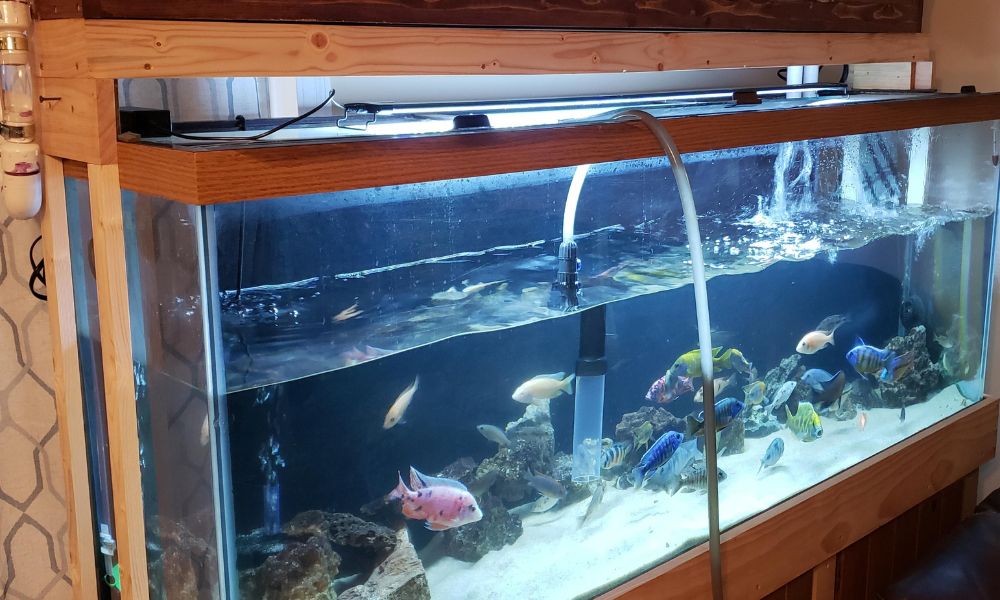
Signs That Your Overhead Filter Needs Cleaning
Understanding when to clean your overhead filter is key to maintaining a healthy aquarium environment. Here are some common signs that indicate your filter might be due for a cleaning:
1. Decreased Water Flow
One of the most noticeable signs is a reduction in water flow. If you observe that the water is not circulating as vigorously as usual, it’s likely that the filter is clogged, restricting water movement.
2. Unusual Noises
Overhead filters are generally quiet. If you start hearing unusual sounds, like louder humming or gurgling, it could mean that the filter is struggling to function properly due to blockages.
3. Visible Dirt and Debris
Take a look at your filter. If you can see debris, dirt, or slime accumulating, it’s a clear indicator that cleaning is needed. These build-ups can hinder the filter’s effectiveness.
4. Cloudy Water
If the water in your aquarium starts looking murky or cloudy, it’s a sign that the filter isn’t cleaning the water as efficiently as it should. This could be due to a dirty filter media or clogged components.
5. Odor from the Aquarium
A well-maintained aquarium should not smell foul. If you start noticing an unpleasant odor, it might be due to waste products not being filtered out properly.
6. Change in Fish Behavior
Pay attention to your fish. If they seem less active, are gasping for air at the surface, or show signs of stress, it could be due to poor water quality resulting from an ineffective filter.
The Impact of a Dirty Filter on System Efficiency
A dirty or clogged filter can significantly impact the efficiency of your aquarium system. It can lead to:
- Poor Water Quality: A clogged filter cannot efficiently remove waste and toxins from the water, leading to harmful ammonia and nitrate build-ups.
- Increased Stress on Fish: Poor water quality can stress your fish, making them more susceptible to diseases.
- Higher Energy Consumption: A clogged filter makes the pump work harder, which can lead to increased energy usage and higher utility bills.
- Reduced Oxygen Levels: Without proper filtration, oxygen levels in the water can drop, which is detrimental to your fish’s health.
Regular monitoring and maintenance of your overhead filter are essential to prevent these issues and ensure a thriving aquatic environment.
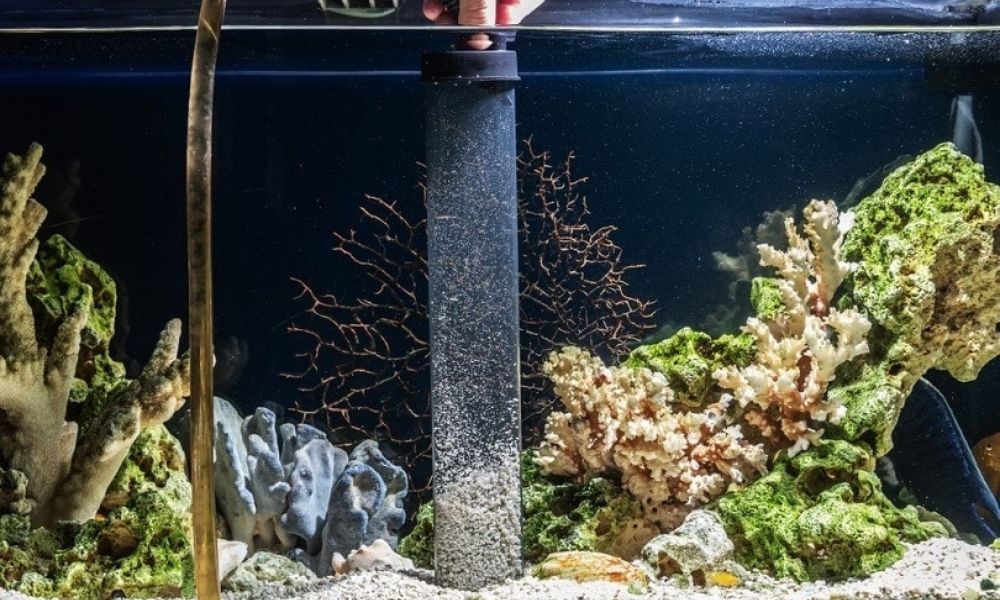
Step-by-Step Guide to Cleaning Overhead Filters
Cleaning your overhead filter is crucial for maintaining a healthy aquarium. Here’s a detailed guide to help you through the process, along with some tips for different filter types:
- Turn Off and Disconnect the Filter: Safety first. Ensure that the filter is turned off and unplugged from the power source. This prevents electrical hazards and allows you to handle the filter safely.
- Remove the Filter from the Aquarium: Carefully lift the filter unit from your aquarium. Make sure to do this gently to avoid disturbing your fish or stirring up debris in the tank.
- Disassemble the Filter: Open up the filter casing. Remove the filter media, sponges, and any other components. Different filters may have varying designs, so refer to your filter’s manual for specific instructions.
- Clean the Filter Media: Rinse the filter media in a bucket of aquarium water. It’s important to use aquarium water to preserve the beneficial bacteria. Avoid tap water as chlorine can harm these bacteria. For foam sponges, gently squeeze them in the water to dislodge debris.
- Inspect and Clean Mechanical Parts: Look at the impeller and other mechanical parts for any signs of wear or damage. Clean these parts with a soft brush or cloth to remove any dirt or algae.
- Rinse Internal Components: Rinse the internal components with clean aquarium water. Make sure all parts are free of debris.
- Reassemble and Reinstall the Filter: Once all parts are clean, reassemble the filter according to the manufacturer’s instructions. Ensure that everything fits back securely.
- Refill and Reactivate the Filter: Place the filter back on the aquarium. Refill any necessary water in the filter compartment. Plug it back in and turn it on. Check for any leaks or unusual noises.
Tips for Different Filter Types
- Mechanical Filters: Focus on cleaning the sponges and pads. They are the primary components that trap debris.
- Chemical Filters: If your filter uses activated carbon or other chemical media, check if it needs replacing according to the schedule recommended by the manufacturer.
- Biological Filters: Be gentle with bio-media. Its primary function is to host beneficial bacteria, so it’s crucial not to clean them too harshly.
Remember, regular maintenance of your overhead filter is essential for the well-being of your aquarium. This step-by-step guide is designed to make the cleaning process as straightforward and effective as possible, regardless of your filter type.
Troubleshooting Common Issues During Cleaning Overhead Filters
Cleaning your overhead filter can sometimes present challenges. Here’s a guide to troubleshooting common issues you might encounter, along with effective solutions and preventive measures:
Difficulty Disassembling the Filter
- Challenge: Sometimes, filter parts can be tightly fitted or stuck due to prolonged use.
- Solution: Gently wiggle the parts to loosen them. If necessary, use a filter wrench, but avoid applying excessive force to prevent damage.
- Prevention: Regularly clean and maintain your filter to prevent parts from getting stuck due to debris accumulation.
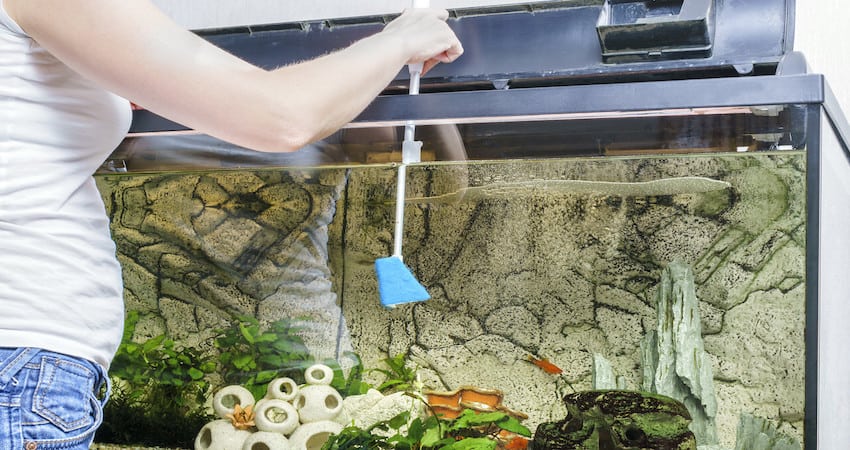
Loss of Beneficial Bacteria
- Challenge: Over-cleaning or using tap water can destroy beneficial bacteria in the filter media.
- Solution: Always clean filter media in aquarium water. If bacteria are lost, consider using a bacterial supplement to re-establish the colony.
- Prevention: Avoid over-cleaning and stick to a regular maintenance schedule.
Filter Not Restarting After Cleaning
- Challenge: Air trapped inside the filter or improperly assembled parts can prevent the filter from restarting.
- Solution: Check for proper assembly and ensure all parts are correctly fitted. Manually fill the filter with aquarium water to remove air pockets before restarting.
- Prevention: Ensure thorough knowledge of the assembly process and be cautious while putting the filter back together.
Reduced Filter Efficiency Post-Cleaning
- Challenge: Even after cleaning, the filter may not perform optimally, possibly due to worn-out parts.
- Solution: Inspect and replace any worn-out components like sponges, seals, or the impeller.
- Prevention: Regular inspection of filter components for wear and tear can prevent sudden efficiency drops.
Water Leaks After Reassembling
- Challenge: Improper fitting or worn-out seals can cause leaks.
- Solution: Check the fittings and ensure all parts are securely and correctly assembled. Replace any damaged seals or gaskets.
- Prevention: Regularly check and maintain seals and gaskets to ensure they are in good condition.
Cloudy Water After Filter Maintenance
- Challenge: Disturbing the substrate or a sudden change in the filter media can cause cloudy water.
- Solution: Let the filter run for a few hours. Check if the filter media needs further cleaning or replacement if cloudiness persists.
- Prevention: Be gentle when cleaning and avoid unnecessary changes in filter media.
By addressing these common issues with the appropriate solutions and preventive measures, you can ensure a smooth and efficient cleaning process for your overhead filter. This will help maintain a healthy and thriving environment in your aquarium.






